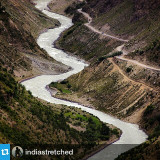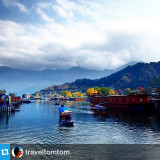Random image from our India photo collection

Jharkhand
Introduction
The Parliament passed the Bihar Reorganization Bill on August, 2, 2000 to create the state of Jharkhand. The state comprises of twenty-two districts of the erstwhile Bihar. It covers an area of 74,677 Sq km. Jharkhand is bordered by Bihar in the north, Chattisgarh in the west, Orissa in the south and West Bengal to its east. 35%, of the population of Bihar live in the Jharkhand region.
Jharkhand has huge reserves of forests and natural resources. With total revenue of Rs 3,775 crores, jharkhand may be able to lessen its poverty. Its revenues can now be utilized for its own development and no longer be diverted to the state treasury of Bihar as has been the case. Naturally the biggest loser is Bihar. Bihar will suddenly find its lifeline of revenues shrunk without those contributed by jharkhand region.
Jharkhand provides for about 63% of Bihar’s total revenue. With the creation of Jharkhand, the reduced Bihar state will suffer a revenue loss Rs 1,500 crores annually.
Jharkhand is expected to become the Industrial powerhouse of the country if its leaders wish it to become the Industrial powerhouse of the country by providing the required assistance.
Go back
Jharkhand has huge reserves of forests and natural resources. With total revenue of Rs 3,775 crores, jharkhand may be able to lessen its poverty. Its revenues can now be utilized for its own development and no longer be diverted to the state treasury of Bihar as has been the case. Naturally the biggest loser is Bihar. Bihar will suddenly find its lifeline of revenues shrunk without those contributed by jharkhand region.
Jharkhand provides for about 63% of Bihar’s total revenue. With the creation of Jharkhand, the reduced Bihar state will suffer a revenue loss Rs 1,500 crores annually.
Jharkhand is expected to become the Industrial powerhouse of the country if its leaders wish it to become the Industrial powerhouse of the country by providing the required assistance.
Go back









